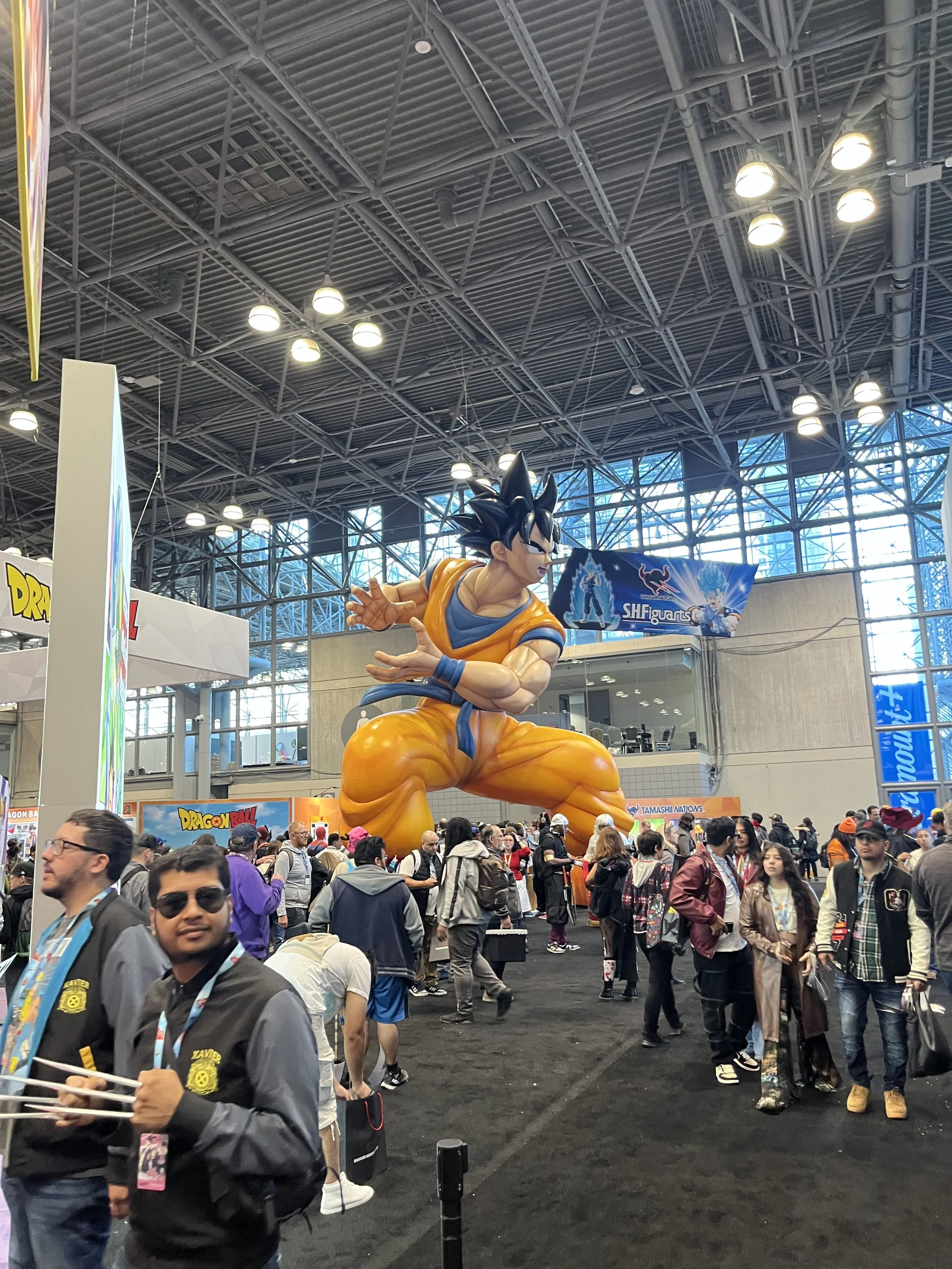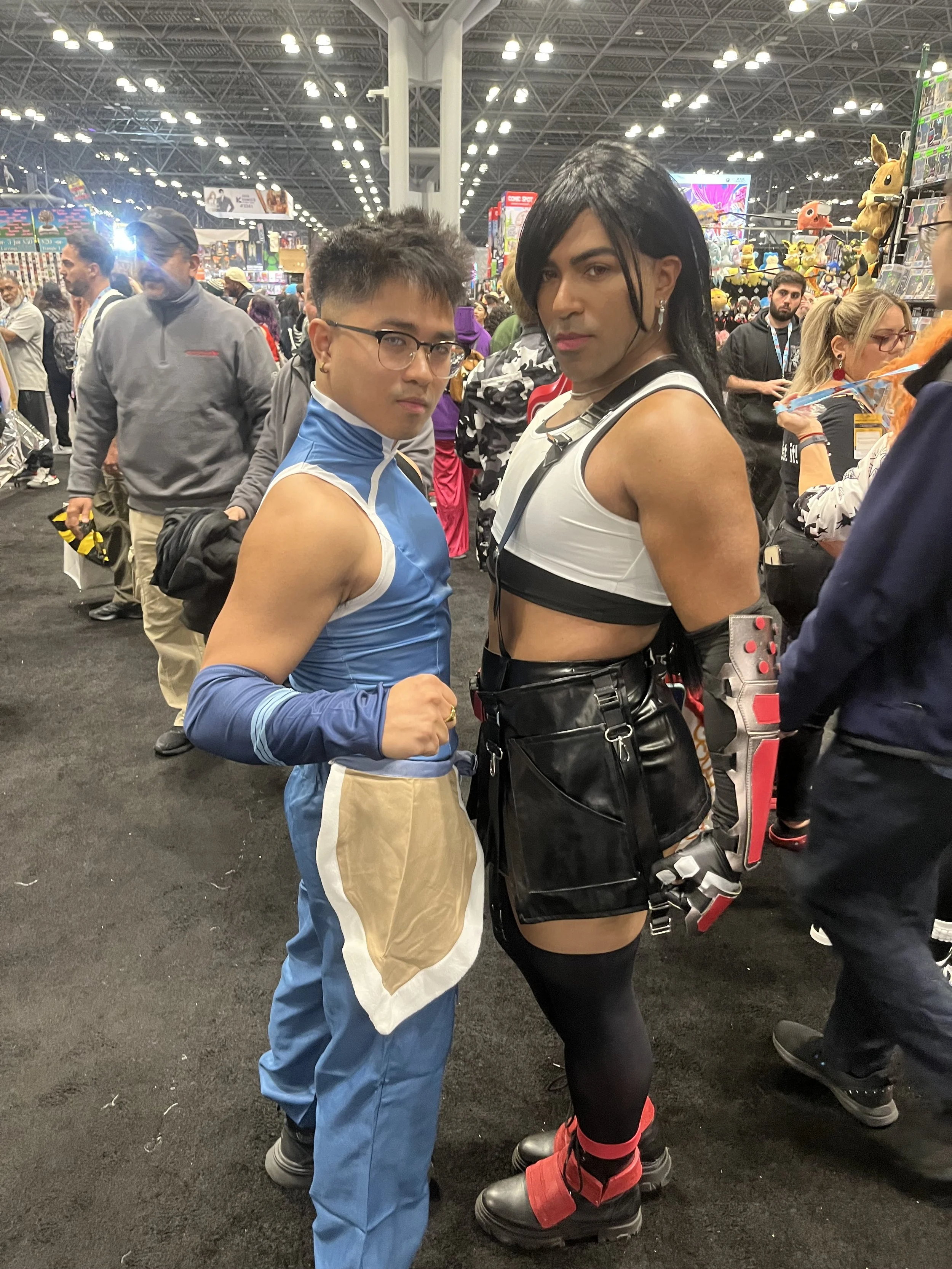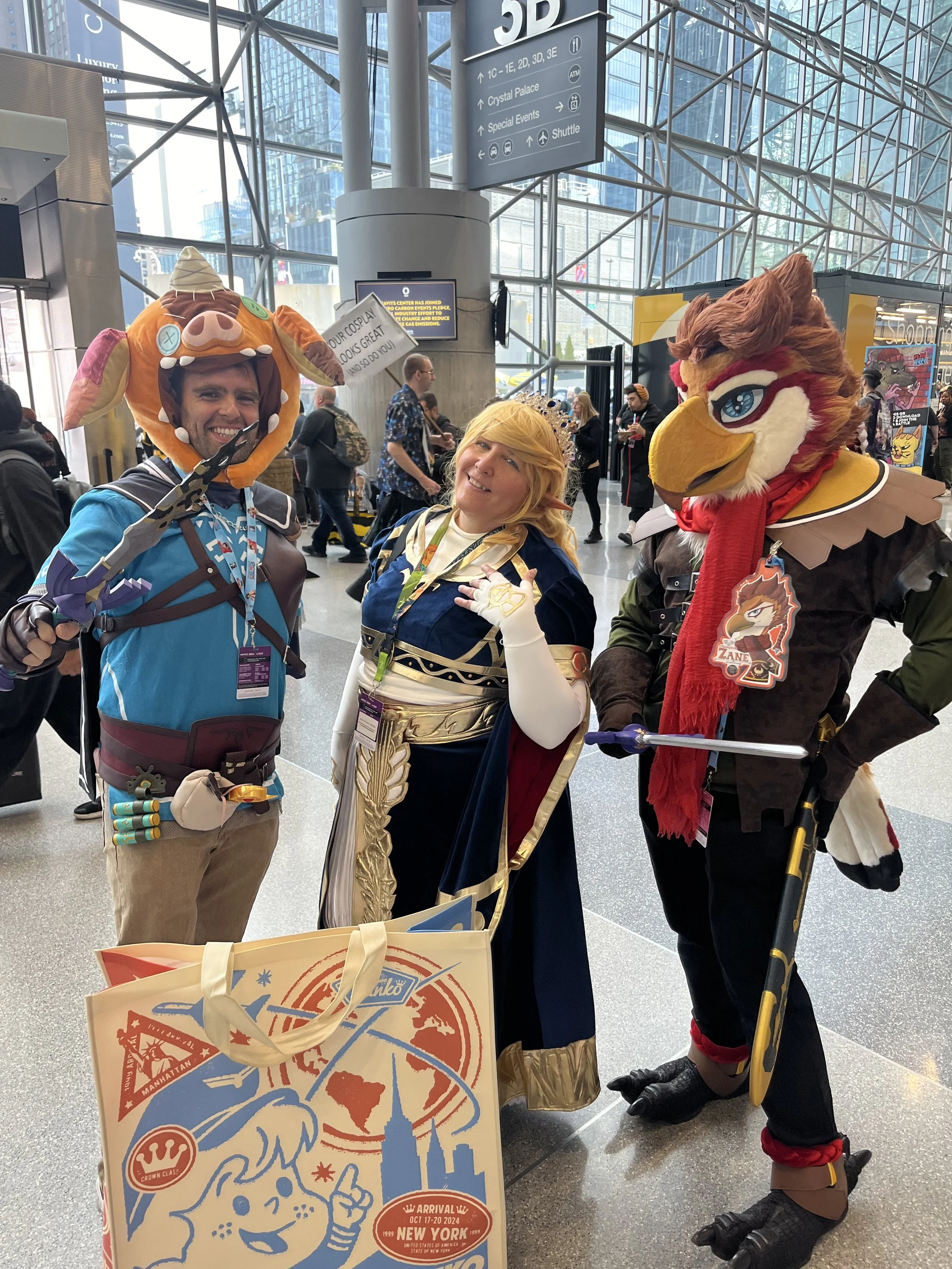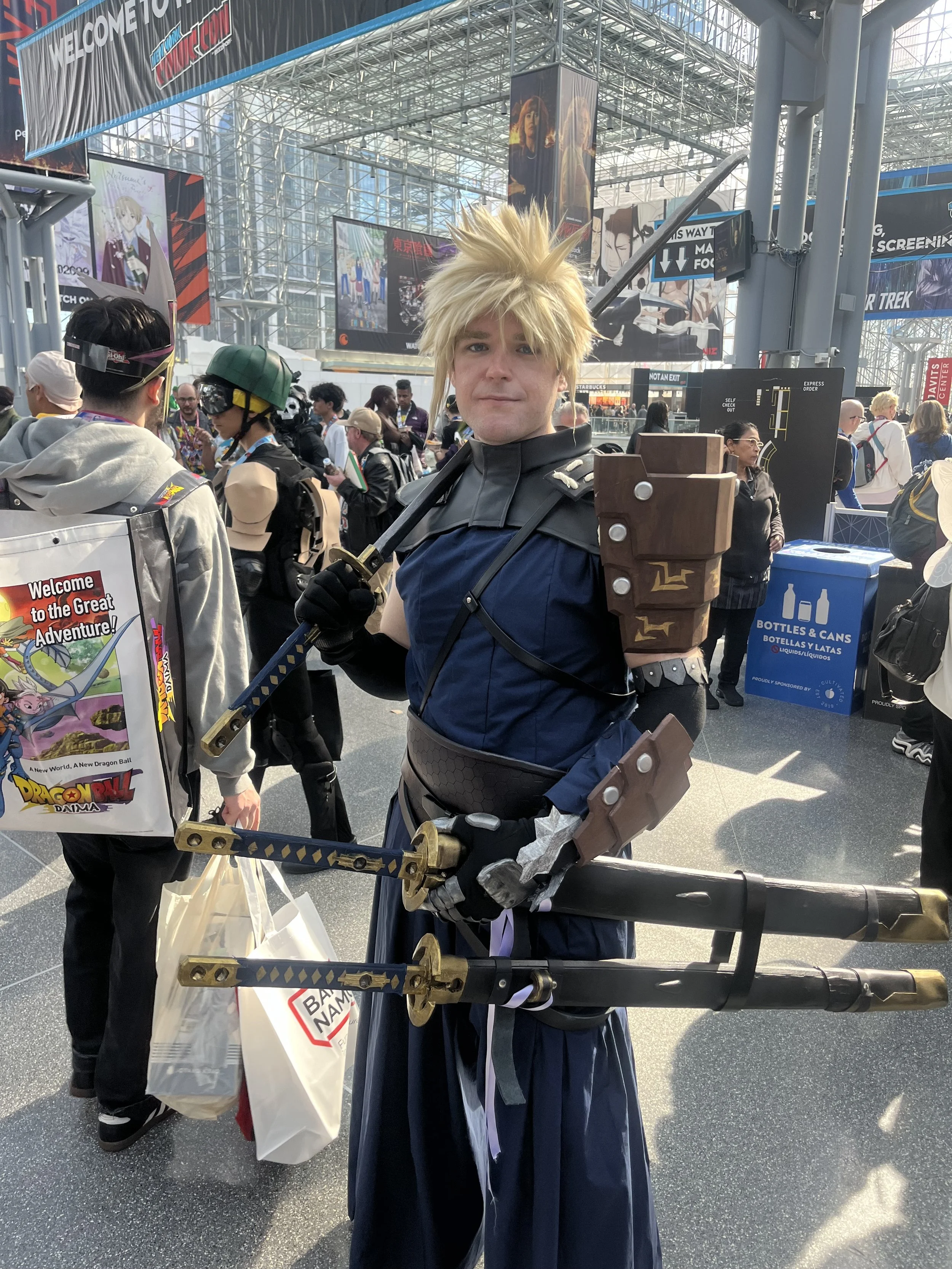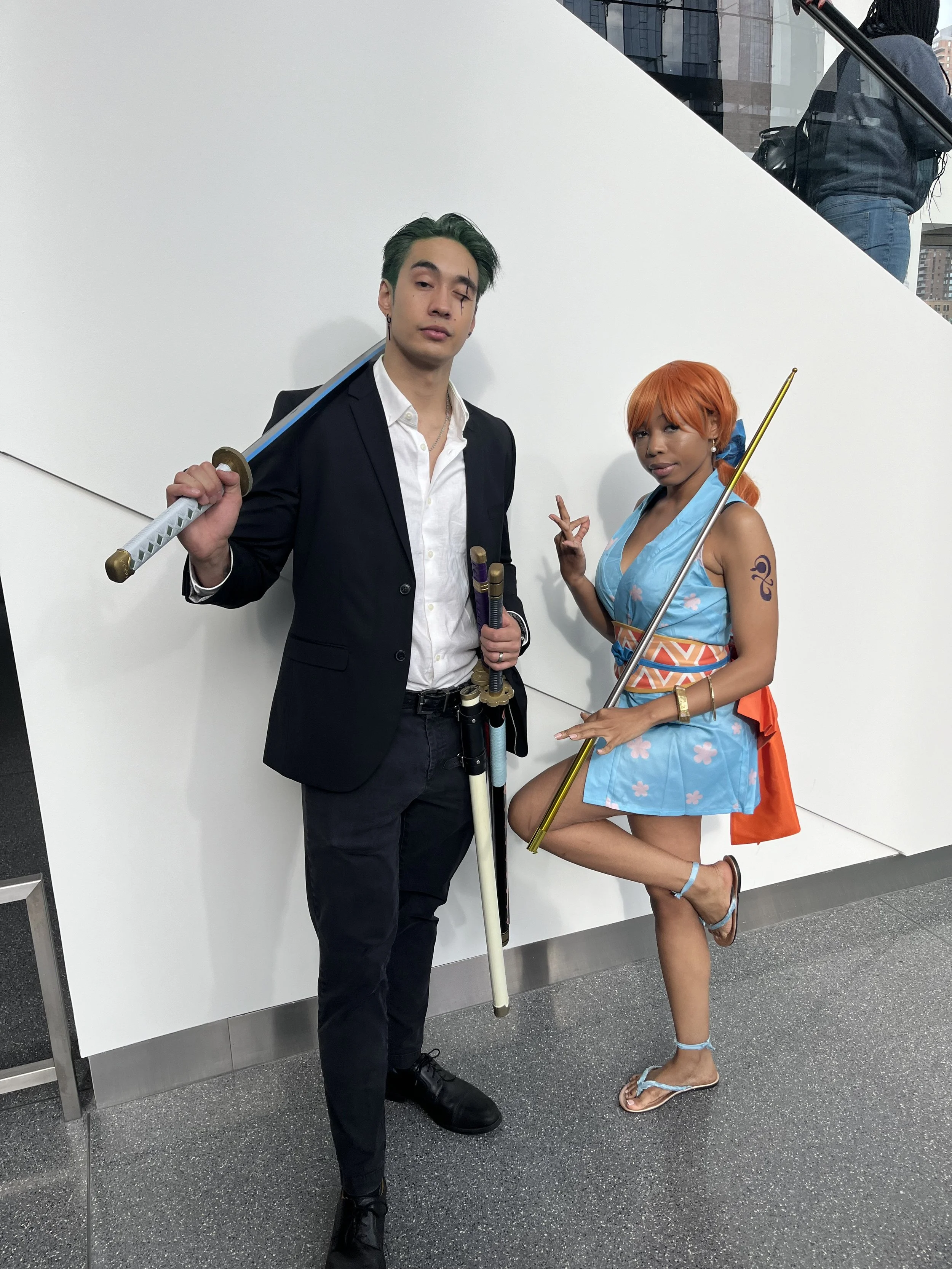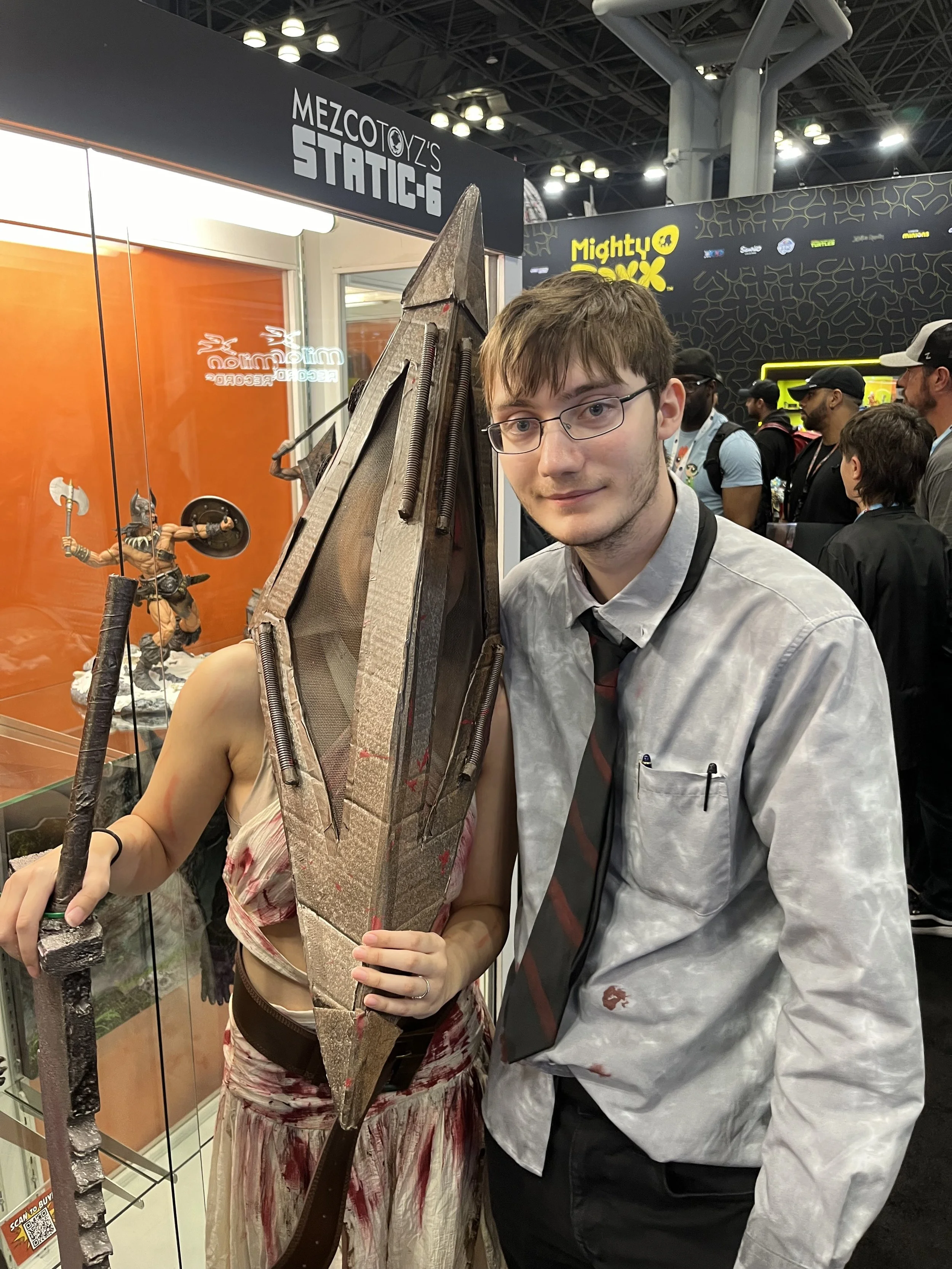New York Comic-Con

“For me it was just I really like getting dressed up as a character that I really love. I don't know, it makes me feel like part of that universe”
Every year, hundreds of thousands of New Yorkers, residents of the tri-state area, and visitors from all over the globe pile into Javits center for one weekend just to celebrate their fandom, and nerd out. It’s time for New York Comic Con.
“Um, about a year ago, I commissioned this fur suit to really kind of like, you know, embrace the character. And I kind of like, you know be able to I guess express myself in a way. You know in a way that makes me feel more confident, more like, I don't know just like be more confident in myself, and be more willing to go out and socialize like I'm doing right now.”
The very first NYCC was held in February of 2006, and attendance swiftly maxed out at 10,000 attendees. Since then the convention has skyrocketed in popularity and in 2013 it became the largest comic convention in North America surpassing its San Diego counterpart. With the highest attendance being in 2019, a staggering 260,000 people attended the con. Nowadays NYCC averages at least 200,000 people attending every year.
“When I get into cosplay, at first I'm always very self conscious until I get into an area like a convention where it's full of people. I feel safe. I feel free.”
The word cosplay (costume-play) was created in 1984 at World con in Los Angeles, when Noboyuki Takahashi wanted to create a term that encompassed the widely popular and leisurely act of dressing as popular characters in fiction. However, the practice itself can be dated to 1939, at the World Science Fiction convention, where Forrest J Ackerman and his girlfriend Morojo -who made the costumes- wore what is considered the first cosplay, dressing in the futuristic costumes from the 1936 H.G. Wells' film, Things to Come. Yet, it was after the 1980s that cosplay would begin to explode in popularity.
While Cosplay is the visual focal point of NYCC, it’s not the sole reason why fans and enthusiasts go there - these conventions are the combination of vendors, fans, brands, and celebrities. Many fans are going to NYCC to purchase merchandise from artists and vendors, wanting to see the latest reveals from their favorite brands and franchises, or getting a signature or photo taken with different authors, artists, and celebrities. Cosplay was born as a result of these different experiences, it’s the result of fandom and now it has cemented itself as one of the foundational pillars of the NYCC experience, and any convention experience.
People go to conventions not only to consume, but to create and share, and it is within the act of creation where the power of fandom is at its strongest. Cosplay is not simply just the act of imitation through dress, it is also about adapting media, and within media, the possibility to create their own versions of characters, social settings, and even completely new characters imagined into the setting. That is where the magic of cosplay happens, the convention is simply the physical stage where cosplayers are welcomed and encouraged to create their own original characters and worlds by combining their actual worlds and virtual worlds through the social immersion of attending the convention.
“I got to a point where just like, you know, I was wearing a lot of Legend of Zelda t-shirts. Like, every chance I had I was, you know, wearing that t-shirt and I just got to the point where like, I need to do another step. Like, it's not enough. I want to be Link. Like, because I'm that guy in that game and I would like to be that guy. So, you know, that's what, I was super anxious because I'm older. And I was like, is someone gonna tell me I'm too old or too fat or too female to do this? No one did. No one cared. Um, and it's been, it's been amazing”
Many cosplayers see their hobby as both an escape and to embody the new realities they create. Their identities and personas -who they are when they cosplay can be completely different, or a further realized version of themselves. For many, cosplay isn’t necessarily about becoming that specific character, but a marriage between themselves and the character through that marriage something new is created. Cosplaying is about how they can realize that character through themselves, merging a virtual world and the actual, to create a space where other like minded people can accept and also see that person for whom they see their own self as. Through social immersion cosplayers are able to create new realities for themselves, if only temporarily.
“I feel it gives you a lot of identity. For example, I have a disability. So creating a cosplay in the very first time for me was like, maybe I shouldn't do it because the character has like the two arms, the two legs, you know, but when I did it and people never actually acknowledged that, and in my mind, I was thinking like, how would the character look like with one arm and I can identify myself with that character. That's when it clicked for me. And I was -you know, I don't feel different anymore. Like, I can, like, whatever perception I have of myself, I can put it in that character and feel the same way as that, as the same as him.”
It’s not necessarily the case that all cosplayers have the same perspective, or motivation behind cosplaying, instead the shared sentiment is joy, at the core of cosplaying it should be fun- everyone should be allowed to do it. A key factor that allows cosplayers to create new worlds and social experiences, is that all cosplayers are entitled to cosplay, at the heart of the experience they should feel like they belong, and sometimes new forms of belonging are made. Belonging between the cosplayer and character, belonging between cosplayers of the same franchise, cosplayers who bond over the craft of cosplaying, and between the brands who recognize cosplayers and engage with them to foster a greater love of their media. Through this belonging suspension of disbelief is fostered, and cosplayers are able to change their reality, and even their own selves.
So expect to see even more costumes next year. Whether attendees come to express their love for their favorite character, build communities with their friends and like-minded fans, or to simply simmer in the fiery energy of fandom, NYCC has become a New York mainstay that celebrates imagination and belonging. At its heart, cosplay is more than just dress-up—it’s a transformative act of self-expression, creativity, and connection for a few days each year.
Words & photography by Luc Oliver Perret
